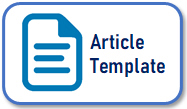Ants (Hymenoptera: Formicidae) at Biology Laboratory of Faculty of Mathematics and Natural Sciences, Universitas Negeri Padang
Abstract
The ants are one of the insects that dominate all ecosystems, it biomass reaching more than 30% in tropical ecosystems. The ants plays positive or negative roles in ecosystem. The negative role of ants is as a household pests that can have a negative impact on humans. The loss caused by pest ants is causing contamination of food as well as contamination of sterile equipment in hospitals and laboratories. The ant stinging will cause allergies and also become disease vectors due they association with several pathogenic microorganisms. This study was conducted at the Biology Laboratory, Faculty of Mathematics and Natural Sciences, Universitas Negeri Padang, Air Tawar, West Sumatra, from October to November 2021. The ants were collected inside and outside of the laboratory by using the baited trap (peanut butter, honey, and sardines) and hand collection methods. A total of 419 individual ants were found belonging to eight species and three subfamilies. The highest number of individual found in Tapinoma melanocephalum.
Keywords
Full Text:
PDFReferences
Agosti, d., Majer, j., Alonso, l., & Schultz., 2000. Ants Standart Methods For Measuring And Monitoring Biodiversity S mithsonian Institution Press. Washington. Pp 11-35.
Antwiki. Antwiki: The Ants. Available from: http://www.antwiki.org (diakses tanggal 10 Desember 2021).
Astuti FA, Herwina H, dan Dahelmi. 2014 Jenis-jenis Semut (Hymenoptera: Formicidae) di Bangunan Kampus Universitas Andalas Limau Manis Padang. Jurnal Biologi Universitas Andalas, 3(1): 34–38.
Bolton, B. 1994. Identification Guide to the Ant Genera of the World. Cambridge: Harvard University Press.
Brühl et al. 1998. Stratification of ants (Hymenoptera, Formicidae) in primary rain forest in Sabah, Borneo. Journal of Tropical Ecology 14: 28
Hasriyanty, Akhmad R,dan Damayanti B. 2013. Keanekaragaman semut dan pola keberadaanya pada daerah urban di Palu, Sulawesi Tengah. Jurnal Entomologi Indonesia. 12(1)
Hölldobler, B dan E. O. Wilson. 1990. The Ants. Cambridge: Harvard University Press
Holway, D.A., Lach, L., Suarez, A.V., Tsutsui, N.D., dan Case, T.J. 2002. The causes and consequence of ants invasions. Annual Review of Ecology and Systematic33:181-233
Jetter M. K., J. Hamilton, dan H. J. Klotz. 2002. Red Impoted Fire Ants Threaten Agriculture, Wildlife and Homes. California Agriculture
Junaidi, Refi. 2017. Jenis Jenis Semut (Hymenoptera : Formicidae ) Pada Rumah Tangga Di Kelurahan Purus Kota Padang Sumatera Barat. Skripsi. Universitas Andalas. Padang.
Lach, L., Parr, C.L., & Abbot, K.L. 2010. Ant Ecology. New York: Oxford University Press.
Le, YC. 2002. Tropical Household Ants: Pest Status, Species Diversity, Foraging Behavior and Baiting Studies. Proceeding of the 4th International Conference On Urban Pests.
McGlynn TP. 1999. The worldwide transfer of ants: geographical distribution and ecological invasions. Journal of Biogeography
Mele, P. Van, Thi, N., Cuc, T., dan Rahayu, S. (2004). Semut Sahabat Petani. Worlg Agroforestri Centre.
Mooney HA, Hobbs RJ. 2000. Invasive Species in a Changing World. New York: Island Press
Pfeiffer, M., Cheng Tuck, H., dan Chong Lay, T. 2008. Exploring arboreal ant community composition and co‐occurrence patterns in plantations of oil palm Elaeis guineensis in Borneo and Peninsular Malaysia. Ecography, 31(1), 21-32.
Rust MK dan DH Choe. Ants Integrated Pest Management in and around the home. California:UC ANR Publication, 2012.
Shattuck, S. O. 2000. Australian Ants: Their Biology and Identification. CSIRO Publishing. Australia.
Tiede, Y., Schlautmann, J., Donoso, D. A., Wallis, C. I., Bendix, J., Brandl, R., & Farwig, N. (2017). Ants as indicators of environmental change and ecosystem processes. Ecological Indicators, 83, 527-5
Wetterer JK. 2005. Worldwide distribution dan potential spread of the long- legged ant, Anoplolepis gracilipes (Hymenoptera: Formicidae). Sociobiology. 45(1): 1-21.
Zulkarnain S. 2006. Preferensi Semut Pemukiman Terhadap Berbagai Jenis Umpan[Skripsi]. Bogor (ID): Institut Pertanian Bogor.
Refbacks
- There are currently no refbacks.




